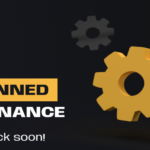Hemis is a new Layer 1 blockchain, set to launch in January 2024, with tokens being distributed via an airdrop in February 2024. The Hemis launch and airdrop method will differ from other such events in the industry. This blog post aims to provide context on how and why things will unfold in this manner.
The Original Blockchain Launch Plan
Back in 2019, when I first contemplated launching my own blockchain project, the plan was to conduct a stealth launch without any premine. In the early days of blockchain, projects often launched abruptly with minimal notice. The primary methods to acquire tokens were through proof-of-work mining or purchasing them from miners on an exchange.
However, this approach had its pitfalls. It often led to an arms race where bad actors used excessive hash power to outpace difficulty adjustments, sometimes hijacking the chain for ransom or mischief.
Many Proof of Stake blockchains started with PoW mining for initial blocks. These launches were challenging. For instance, in 2017, an altcoin blockchain I managed was attacked by a large bitcoin pool, leading to chain forks and substantial financial losses.
Despite its risks, the old-fashioned launch method was relatively fair. Miners could earn tokens, giving them value through the electricity spent in mining. This method also allowed for a gradual introduction of value to a token.
The New Blockchain Launch Plan
To avoid the aforementioned issues, we are planning a private but fully transparent PoW phase. Initially, only the Hemis core team will mine, and the Hemis wallet will not be publicly available.
The first few hundred blocks will premine all investor, founder, and airdrop tokens. This process will be visible on our block explorer.
After mining 300 blocks, we will transition to Proof of Stake, with only the Hemis core team staking initially. We will then conduct the airdrop, distributing 50% of all circulating tokens to the community. The Hemis team will reduce their staking to ensure community majority control. Any tokens mined or staked by us during the private phase will be given to the community as bounties and incentives, leading to a decentralized blockchain.
Building a Community and Token Distribution
A key goal is to build a thriving community. For this, we need the limited available tokens to reach as many people as possible, avoiding concentration in the hands of a few ‘whales’.
Despite the technical challenges, launching in the old-fashioned way risks being overlooked. Our early financial backers agreed, prompting us to avoid a traditional token sale due to its high costs and ethical concerns.
Given these considerations, we decided on an airdrop. Our goals are to build a community, transition safely from PoW to PoS, and distribute tokens broadly to ensure no majority control by the Hemis team.
Our approach involves:
- Making the Hemis wallet open source on GitHub.
- Inviting people to download the wallet, generate an address, and register for the airdrop.
- Offering staking bonuses for people who stake their tokens to help us keep our chain safe and secure. The more you stake, the more tokens you will be gifted. Staking will only be possible for Windows, Mac and Linux. Hemis supports cold staking but you must have Windows, Mac of Linux to set this up. No mobile staking will be possible.
Trading and Conclusion
Post-airdrop, once the community holds majority control and the blockchain is secure, we’ll initiate trading through our exchange partner. Once our wallet is made open source, there is nothing to prevent another exchange listing the Hemis project however this eventuality will be outside of our control if it happens.
Thank you for reading this post. Please follow us on Twitter and join our Discord using the links provided here.
Stonehedge / Dan Ames


2 responses to “Why is Hemis Launching Differently Compared to Other Projects?”
nice project
Thanks, Kosuke